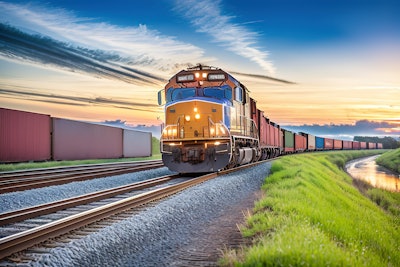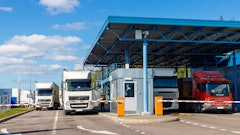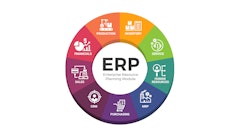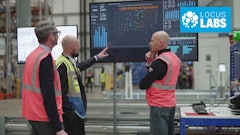
Food shippers face several challenges, ranging from regulatory compliance to the complexity of maintaining the quality and safety of perishable goods. When shipping food or ingredients, products must be shipped at the right temperature to avoid spoilage and improve the quality and safety of products.
Food shippers must comply with stringent regulations to ensure the safety and quality of food. Shippers must meet hygiene, traceability, labeling, and documentation requirements. Food shippers need end-to-end visibility to monitor what is happening in their supply chains. Scattered shipments can cause significant headaches for shippers. Checking across multiple applications and portals spreads shippers thin and leads to avoidable mistakes without accounting for inaccuracies in tracking. Food shippers need centralized, accurate container tracking, alleviating inefficiencies, improving on-time deliveries by up to 20%, and lowering demurrage rates by up to 77%.
Seasonal fluctuations in demand often occur when shipping food products, creating challenges in managing inventory, transportation capacity, and distribution. Managing seasonality in the food shipping industry involves planning, strategizing, and adapting to the fluctuations in demand throughout the year. Shippers must utilize historical data, market trends, and analytics to forecast demand during different seasons. Inventory stock levels must be adjusted based on anticipated demand, reducing excess inventory during slow seasons and ensuring an ample supply during peak seasons. Shippers must establish strong relationships with their suppliers to communicate seasonal needs, aligning production and delivery schedules with the expected fluctuations in demand.
If shipping food products internationally or importing foods from abroad, some complex customs procedures and regulations must be followed. Cross-border transportation requires careful coordination to navigate regulatory differences and ensure compliance.
Transportation mode: Rail
In the complex web of global supply chains, the transportation of goods plays a pivotal role in ensuring that products reach consumers efficiently and promptly. The mode of transportation becomes even more crucial in the food industry, considering the perishable nature of many food products. One often overlooked but highly efficient method of transporting food is through rail shipments.
Rail transport is more cost-effective for shippers, especially when shipping products long distances. Rail cars can carry large quantities of goods, including perishable items, in a single trip, reducing overall transportation costs. Trains are also considered more environmentally friendly than traditional trucking, emitting fewer greenhouse gases per ton-mile of freight transported. As sustainability becomes a growing concern, the rail industry is gaining attention for its eco-friendly practices.
Rail freight has a high capacity for handling large volumes of goods. Specialized refrigerated railcars, or "reefers," are designed to maintain specific temperatures required for transporting perishable food items. These specialized cars come equipped with precise temperature control mechanisms to ensure that perishable goods and ingredients are transported at the optimal temperature, reducing spoilage.
Rail cars allow for efficient movement of goods in bulk, reducing the need for multiple smaller shipments. The streamlined nature of rail transport also minimizes delays and ensures timely deliveries, which is crucial in the food industry where freshness is paramount.
Unlike trucks, which contribute to road congestion and traffic, rail transport operates on dedicated tracks. This separation reduces the impact of transportation on road infrastructure and helps alleviate traffic congestion. This means a more reliable and predictable delivery schedule for food shipments, reducing the risk of delays and ensuring that products reach their destination in optimal condition.
Railroads are investing in infrastructure and technology to improve overall efficiency, which includes upgrading rail networks, implementing automation in rail operations, and adopting energy-efficient practices to reduce costs and enhance reliability. Railroads are exploring ways to reduce their environmental impact, such as using cleaner energy sources and optimizing routes to minimize fuel consumption.
Rail networks offer extensive coverage, connecting distant regions and providing access to markets that may be challenging to reach by other means. This long-distance connectivity mainly benefits the food industry, allowing producers to tap into larger consumer bases and expand their distribution reach. It also opens opportunities for international trade, connecting producers with consumers across borders.
In the intricate dance of supply chain logistics, the choice of transportation mode significantly influences the efficiency and success of delivering goods, especially in the food industry. Rail transport emerges as a robust and sustainable solution, offering cost-effective, environmentally friendly, and reliable options for food shipments. As the world continues to explore innovative ways to meet the demands of a growing population, the rails may prove to be a key player in ensuring that food reaches tables across the globe with efficiency and freshness.
Transportation trends in food logistics
The demand for temperature-controlled transportation is rising, especially for perishable goods. Using refrigerated trucks and rail cars ensures that food products are transported at the right temperature to maintain quality and safety. Cars and trucks can be outfitted with IoT sensors that provide accurate information on the location, condition, and status of food shipments throughout the supply chain, improving overall transparency.
Some technology allows you to consolidate shipment info from multiple sources into a single platform. Instead of logging into various carrier systems and transportation management systems (TMS), this technology gives a single point of view of what is going on across the whole supply chain, regardless of mode. Shippers can stay on top of shipment status with this type of visibility to minimize delays and demurrage charges. Shippers can pinpoint where a shipment is delayed, whether on a railcar or over the road carrier, to avoid future issues. Collectively, these transportation trends aim to address challenges, enhance efficiency, and improve customer satisfaction in the food logistics industry.




















